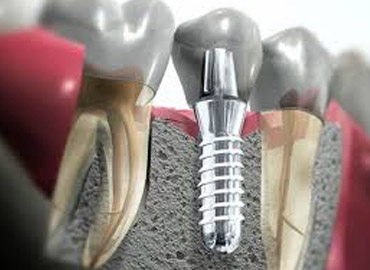Implants are artificial tooth roots that are placed in the jawbone to restore their function and aesthetics...

Implants are artificial tooth roots that are placed in the jawbone to restore their function and aesthetics, rather than the teeth lost for various reasons. Teeth, which are parts of physical aesthetics that provide inseparability and integrity, can cause disturbances in the resulting psychological and social environment. Apart from these factors, it is also observed that it causes nutrition, digestive problems and speech disorders. Dental deficiencies can be accomplished with implant-supported prostheses as well as traditional methods such as bridge prostheses connected to natural teeth or removable prostheses.
One or More Teeth Shortcomings
It is advised that dental treatment that is missing in Dentistanbul is to be restored with a bridge if it is applied for a single tooth, treatment with an implant will be more protective.
In order to make bridge prosthesis, it will be necessary to cover the rest of the healthy teeth. Replacing these bridges at regular intervals is not an economical solution. Instead of missing teeth or implants placed in the space of the teeth, the missing tooth can be treated without harming the healthy teeth next to it.
Full Dentalism
Implant supported prostheses may provide comfort to the wearer if no dental prosthesis is used, because nausea reflexes and prosthetic retention are not sufficient if there are no teeth in the mouth.
What are Implant Stages?
Inspection and Planning
The implant is performed in a multidisciplinary approach. This is a team job; surgical specialist who will implant it in implanted jawbone and implant prosthesis specialist will work together.
The implant can be applied to anyone other than those with some systemic diseases, such as diabetes, which can not be controlled at advanced levels. Because the implants are made of titanium and are positioned in place of the natural tooth root, they are tissue compatible and do not cause any allergic or toxic illness.
During the examination phase, a detailed intraoral examination examines the relationship between the teeth and the relationships between the gums, lower jaw and upper jaw. In order to complete the treatment process with least mistake, apart from the classical radiographs, three dimensional tomography is requested in complicated cases, the one-to-one measurement model of the jaw is determined and the regions where the implants will be placed are planned.
Implant Placement
The right planning process is the starting point for the healthiest care. It is also important that the expert, experienced team to be involved in the operation to be carried out, necessary equipments and necessary hygienic environment are done. Implants are administered as a result of local anesthesia, as are other dental treatments. However, it is possible to operate comfortably under general anesthesia or sedation in some cases where the jawbone is not enough and the tissue grafting is necessary in some cases, in long operations or in extremely stressed patients.
Prosthetics Construction
At the end of the operation, an implant called osseointegration should be expected to bind to the bone surface. This process may vary depending on the bone structure. After the process is completed, the superstructure is created. After surgery, temporary prostheses are made to continue the aesthetic and functioning until the prosthesis is made.